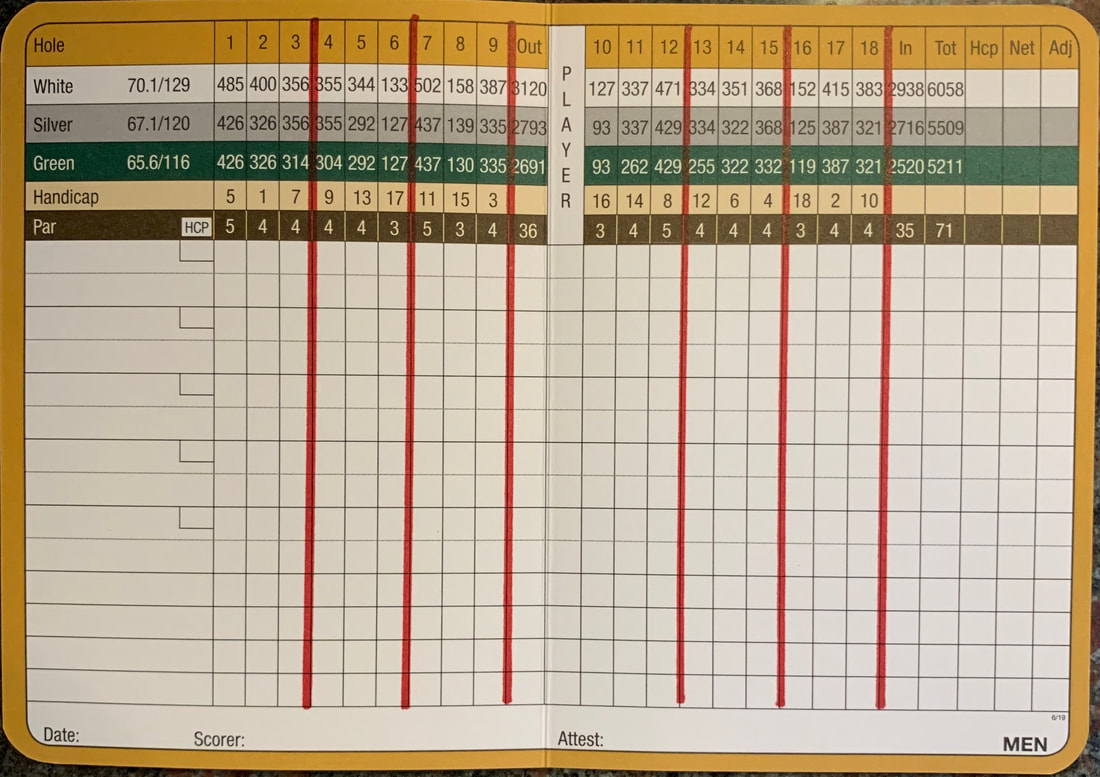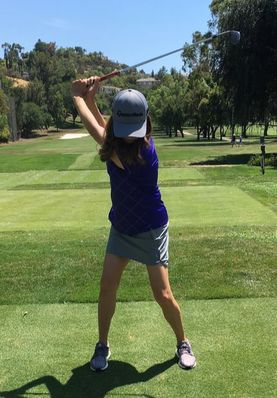|
Grab this kitchen utensil to help you improve your tempo and technique. Watch for the wobble of the ball to help improve your putting form. Happy Practicing! Here are two simple ways to practice extension in your swing which is especially crucial for your driver. Watch this video filmed for TaylorMade Golf for an "at-home" practice for the driver! Happy Practicing! Here is a simple indoor practice drill that is great for improving your ball striking. Tear off 3 strips of painter’s tape and make better contact for when we get back on the course! Happy Practicing! A simple chipping drill that will help you to work on distance control while you are home. Grab your wedge, a few boxes, and some golf balls and try it out! Happy Practicing! Do you have trouble staying present when you play?
Once you have a bad score, do you have trouble recovering? When you are playing well, do you get ahead of yourself and add up your score? If you answered yes, try dividing up your round into 3 hole segments. Decide what "your par" is and then make it a goal to make that score over a 3 hole period. For example, if you shoot in the low to mid 80s, focus on finishing each 3 hole segment with a score of 2 over par. Whether you achieve the goal or not, once the 3 holes are done, you start fresh on the next 3 holes. Here is what to do:
When you can compartmentalize your round, you will have a much easier time recovering and focusing. Try this scorecard trick to help you mentally stay in the game. Click the link below for a recent article on Golf Digest plus some great tips for making those 3-4 foot pressure putts. Also, try the very simple "Push Drill" (video attached) for your putting. This drill is mentioned in the article and will really help you improve your technique. Many golfers tell me that they intentionally try to keep their lower body still in the backswing. There are many reasons for this but usually golfers work on keeping the lower body quiet to reduce a sway or to “keep still”. While this makes sense, it is a distance killer and creates unnecessary pressure on the lower back. Here are some tips to help you move better in the backswing: 1. Make sure you are in an athletic stance to start (neutral posture) 2. Begin the backswing with your arms and torso 3. Allow the lower body to move to help get more torque at the top of the backswing (See the pictures below illustrating the differences with and without hip turn) 4. Try this drill from the experts at the Titleist Performance Institute to get those hips in gear http://www.mytpi.com/exercises#reach_over_the_fence *Swing Tip Suggestion: think of moving your torso or belly button rather than just your shoulders in the backswing to help your hips rotate more in the backswing Next time you are at the range, add a little but more hip turn to really help your low back, improve your length of backswing, and give you more distance. Happy Practicing! Important Note: See the difference in length of backswing and torque in the photos above
|
AuthorTasha Bohlig, PGA shares some golf tips to help your game Archives
February 2021
Categories |
|
|




 RSS Feed
RSS Feed




